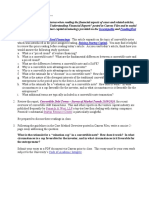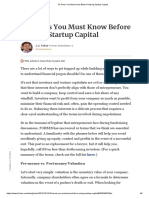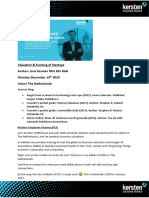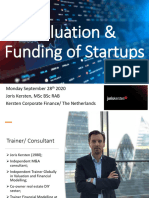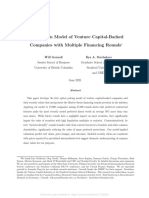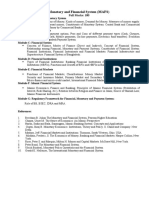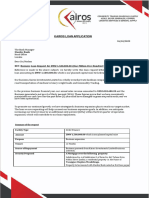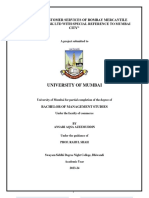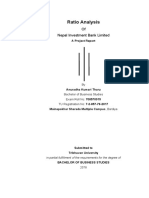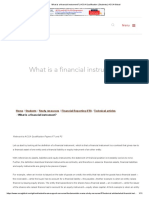0% found this document useful (0 votes)
15 views15 pagesConvertible Notes Slides
The document explains convertible notes as an alternative funding method for startups, comparing them to SAFE notes. Convertible notes allow startups to receive cash without immediate dilution, but they incur interest and have a maturity date, making them a form of debt. The document also discusses the implications of using convertible notes in seed rounds and their conversion during Series A funding, highlighting their advantages and potential drawbacks.
Uploaded by
Nicolas PassardCopyright
© © All Rights Reserved
We take content rights seriously. If you suspect this is your content, claim it here.
Available Formats
Download as PDF, TXT or read online on Scribd
0% found this document useful (0 votes)
15 views15 pagesConvertible Notes Slides
The document explains convertible notes as an alternative funding method for startups, comparing them to SAFE notes. Convertible notes allow startups to receive cash without immediate dilution, but they incur interest and have a maturity date, making them a form of debt. The document also discusses the implications of using convertible notes in seed rounds and their conversion during Series A funding, highlighting their advantages and potential drawbacks.
Uploaded by
Nicolas PassardCopyright
© © All Rights Reserved
We take content rights seriously. If you suspect this is your content, claim it here.
Available Formats
Download as PDF, TXT or read online on Scribd
/ 15







